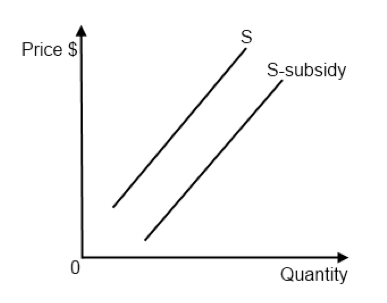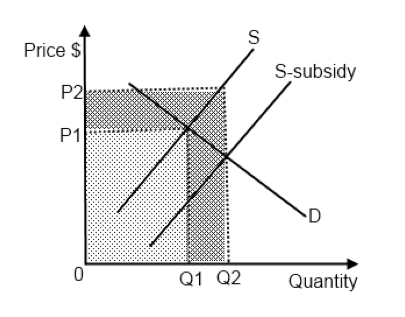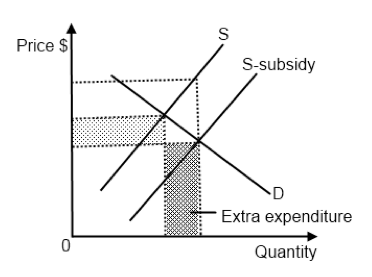Subsidies
Impact on markets
Subsidy: is an amount of money per unit of output paid by the government to a firm.
Aim of providing subsidies:
- Lower the price of essential goods to consumers ? government hopes that consumption will increase
- Guarantee the supply of products ? that government thinks is necessary for the economy. i.e. power source
- OR provide employment to solve economic & social problems.
- Enable producers to compete with overseas trade ? thus protecting home industry
- When subsidies are provided, the market will expand in size (increase in quantity), thus possibly raise the level of employment in the market, since firms might employ more people.

Figure 3.8 - Effect of a subsidy on the supply curve
Supply curve shifts down because a subsidy reduces costs of production.
Consequences of providing a subsidy:
1. Producer: revenue increases

Figure 3.9 - Effect of a subsidy on the producer
2. Consumer: price of the product decreases
- Change in consumer expenditure ? may increase or fall, depending on relative saving and extra expenditure

Figure 3.10 - Effect of a subsidy on the consumer
3. Government: expenditure increases (take money away from other areas of expenditure or raise taxes)

Figure 3.11 - Effect of a subsidy on the government
